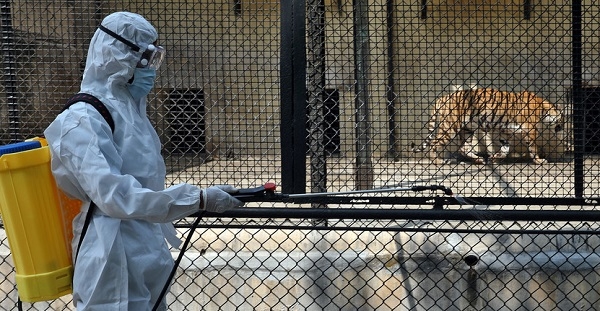Covid-19 in animals detected on multiple Dutch Mink Farms - What is next animal target?
Total Views |
Dr. Michael Greger, in his book - "How To Survive a Pandemic" which was recently released and became very popular, stated that diseases harboured by poultry such as avian flu pose an even greater risk to humans than coronavirus. He said, "as long as there is poultry, there will be pandemics."
According to Wageningen University, Netherland, the chance that the coronavirus infects a (farm) animal is minimal. Globally, only a few cases of SARS-CoV-2 in animals have been reported. The Dutch government states that that is plausible that employees of an infected mink farms were infected by mink. Besides that, there are currently no indications that animals form a source of infection for humans.
Most renowned science journal-"nature" has published review on this issue mentioned that Soon after the new coronavirus started spreading around the globe, reports emerged of cases in animals — pet cats in Hong Kong, tigers in a New York City zoo and mink on farms in the Netherlands. Now researchers are urgently trying to discover which species can catch the virus, and whether they can pass it to people .Coronavirus in mink is now hottest news and stated, "mink on Dutch mink farms have been infected with the coronavirus SARS-CoV-2. Wageningen Bio- veterinary Research performed the confirmation tests. It is likely that mink have infected humans at these farms".

The following animals have been reported to spread the Coronavirus - Covid-19 in human beings -
Coronaviruses in animals-
Coronaviruses occur in various animal species. For example canine coronavirus (CCV) in dogs, feline coronavirus (FCV) in cats, porcine epidemic diarrhoea virus (PEDV), transmissible gastroenteritis virus (TGEV) and porcine respiratory coronavirus (PRCV) in pigs and infectious bronchitis virus (IBD) in chickens. These viruses are different strains than SARS-CoV-2, mostly species-specific and non-zoonotic. Thus, they cannot be transferred to humans.
Tigers tested positive-
A tiger was said to be tested positive for the coronavirus in New York on 5 April. The animal was probably infected by a zookeeper that was not showing any symptoms. The tiger has a dry cough and a decreased appetite. This is the first known case of a zoo animal being infected. Later on in April the news came out that other tigers at this zoo were infected as well.
Cats tested positive-
On 1 April the news reported that a cat in Hong Kong was tested positive for the novel coronavirus. The animal’s owner was also infected, according to the local government. The cat is showing none of the symptoms seen in humans infected by the virus.Belgian authorities reported a cat infected with the virus on 27 March. A week after the owner started showing symptoms of a COVID-19 infection, the cat became sick and was examined. Traces of the virus were found in its faeces. The National Security Council stresses that this is an isolated case.After this, there have also been two cats in New York that tested positive.Antibodies for the virus have been found in three cats in the Netherlands, that were present on an infected mink farm. This news came out on 15 May.
Dogs tested positive-
In Hongkong, two dogs were tested positive for SARS-CoV-2. Both animals were tested because their owner was found to have the infection. Neither animals showed symptoms. Local authorities have determined the dogs should remain in quarantine for as long as they stay positive. To date, animals are assumed to have no role in spreading the coronavirus.A dog from North Carolina has also been tested positive. The dog had mild symptoms.On 15 May the Dutch minstery of LVN announced that antibodies for the virus were found in a dog in the Netherlands.
Mink have tested positive with COVID-19 at multiple mink farms in the Netherlands. The mink showed various symptoms including respiratory problems. Some employees had symptoms of the coronavirus. It seems the infection started there. Research since has shown that mink on the farms have transmitted the virus to each other. It is also plausible that employees have been infected by mink. A mandatory screening of all Dutch mink farms has been instituted and mink farms infected with the coronavirus are culled as of 5 June.The Animal Health Service (GD), Utrecht University (UU), Erasmus MC (EMC) and Wageningen Bioveterinary Research (WBVR) are conducting research to gain more insight into the virus, the spread of the virus and the spread in the environment. Samples of sick and healthy animals have been collected and air and dust samples have also been taken in the vicinity of the farms. GGD is involved in sampling and research into contamination of employees.
Summary-
So far, there have been only two reported cases of animals - both mink - passing the virus SARS-CoV-2 to people. At the moment, the chance of contracting the disease from an infected animal is negligible compared to the risk of catching it from an ill person. Several scientists worry that the virus could end up passing back and forth between animals and people. According to Utrecht University, Netherlands, this could really frustrate efforts to control the pandemic. There is need to take actions now to prevent that from happening. The Question is, What is Next Animal -Target ?

